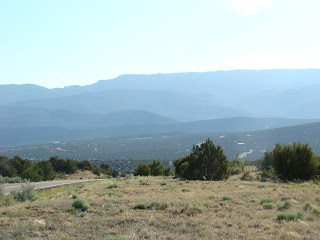N. will be leaving on Thursday for his long trip. He will be spending two weeks in Illinois with family, and then two weeks at COTE camp in New Jersey. While he is gone, we intend to put the wooden floor into his room. But first, I must get N. to do a major cleaning and re-organization, so that while he is gone it will be easy for us to remove the furniture and the carpet.
Frankly, the Engineering Geek and I have been absolutely stymied about what to do about N.'s pig-pen. We have tried reason, humiliation--the "chazer* lives here" sign was greeted with humor--tears (mine, when I emptied potting soil from his clothes basket), and remonstration. Finally, I resorted to the threat that we would not put him on the plane if he did not get cracking. That seemed to work.
*pig, in Yiddish
But I also realized that I need to help N. with the discarding and organizational part. Aspies are, after all, organizationally challenged, to say the least.

So today and tomorrow are slated for room dismantlement and re-organization. Fortunately--because I have many things to do to wrap up the first term of IRD teaching and get N. on the plane with everything he needs Thursday--N. is good at the dismantlement part. Last night he began. Today, he took his bed apart so that he could get at the certified disaster area underneath. As I write, he is vacuuming under the bed and the parts of the bed. Then he is going to tackle the closet. There he will need my help with sorting and discarding many clothes that no longer fit him. He has grown two inches in the past 6 months and we really need to cull the clothing glut in the closet and drawers so he has room for the clothes that fit him.
Later this evening, I have a trip to the local Big Box planned. We need to get a closet 
When N. returns from camp to a clean room with a new floor, new rules will be in force as well. No food or drink, no shoes, no sand or dirt brought in, and daily inspections to enforce the use of shelves, dresser drawers, and closet hangers intead of the floor for storage purposes. So every day the Executive Officer (me) of the Good Ship Los Pecos will perform the inspection. If the bed is not made and the room not picked up, then computer and other priveleges will be rescinded. If we do not get compliance, then a weekly Captain's Mast will take place with other consequences.
N.'s room was not only messy, it was unsanitary and unsafe. This weekend, I got tired of lamenting, critiquing and cajoling. The time for action was more than nigh!


























































